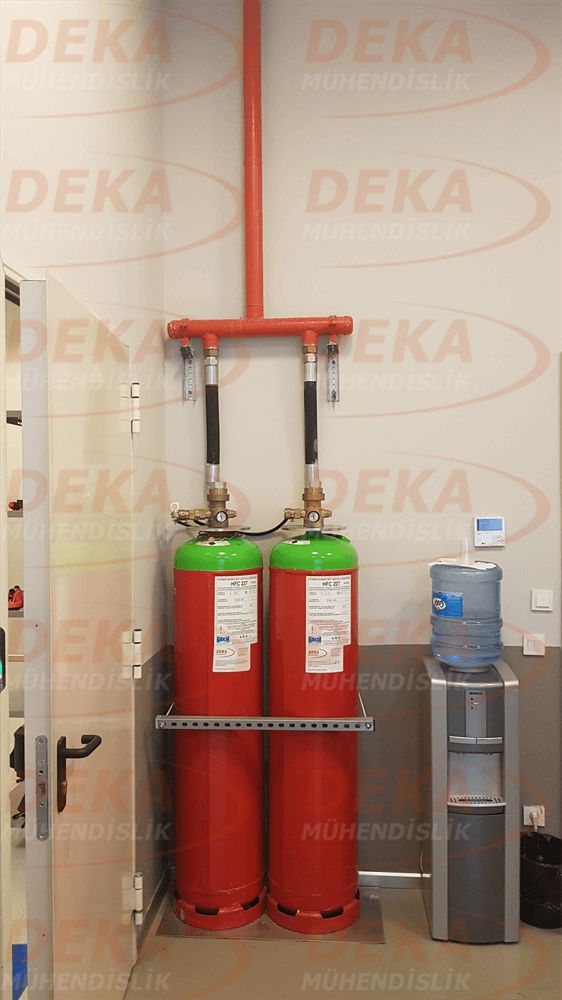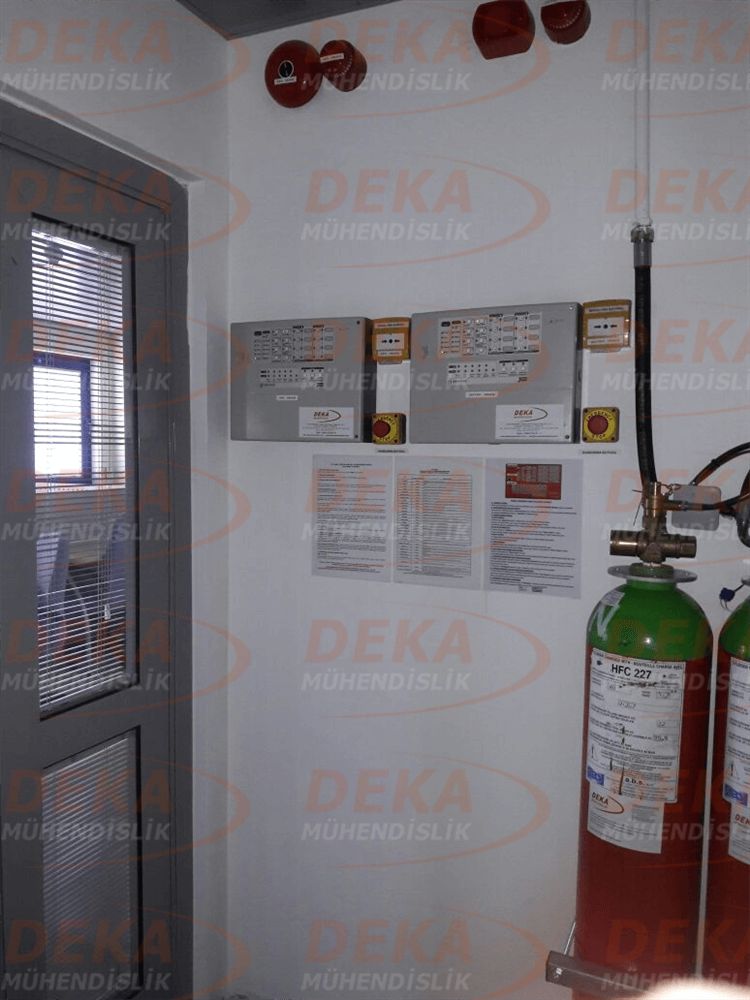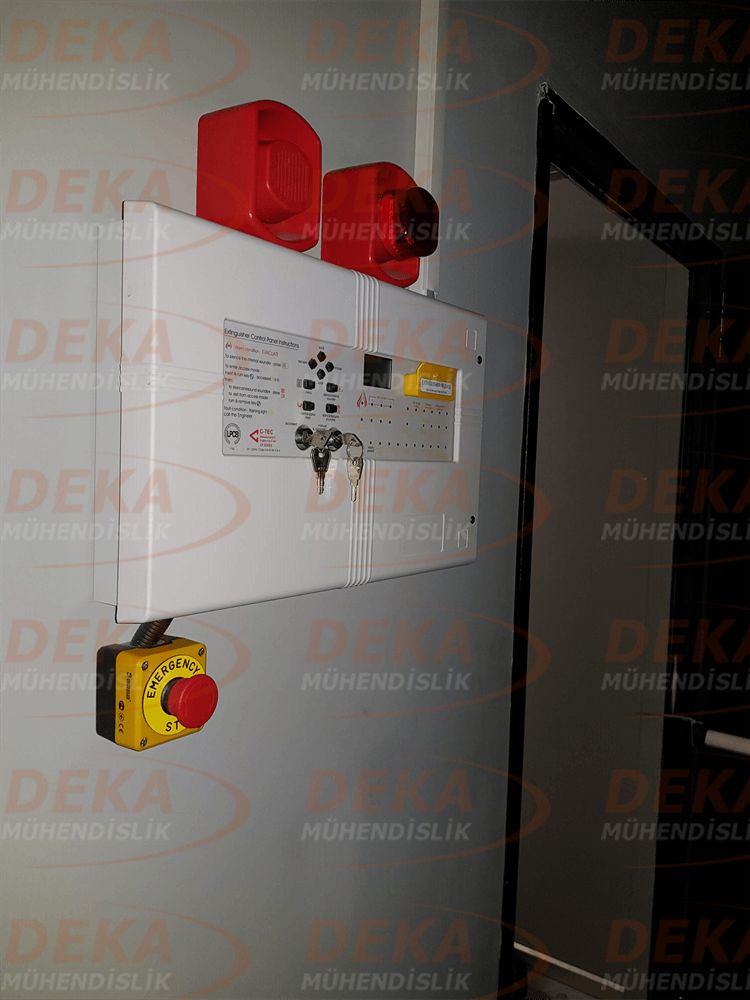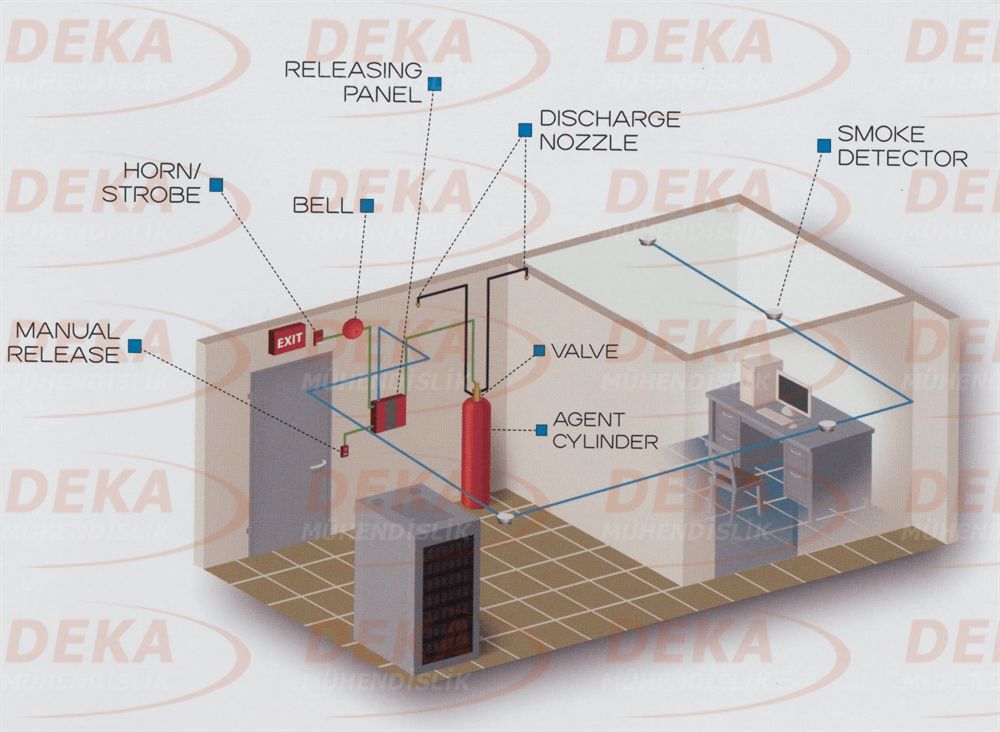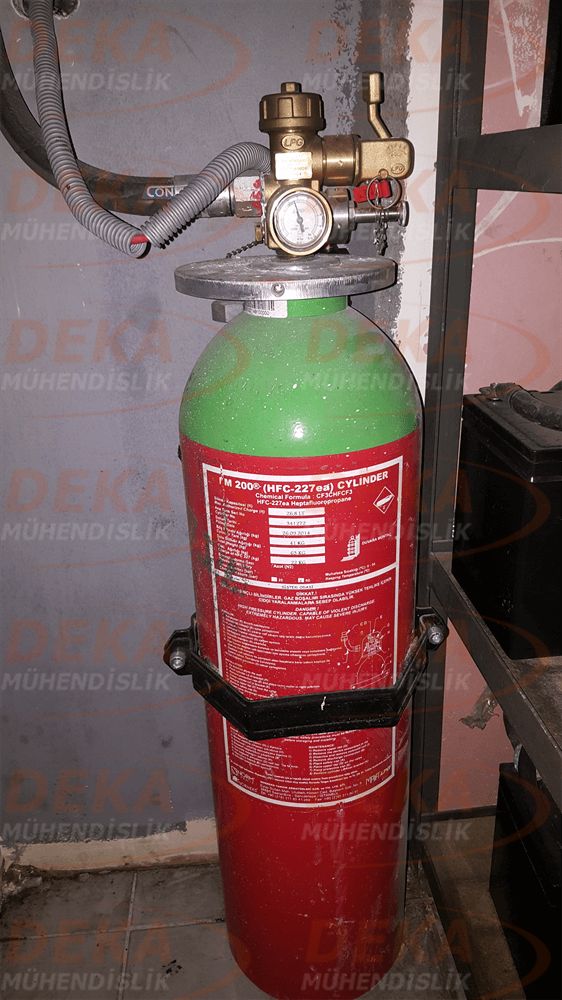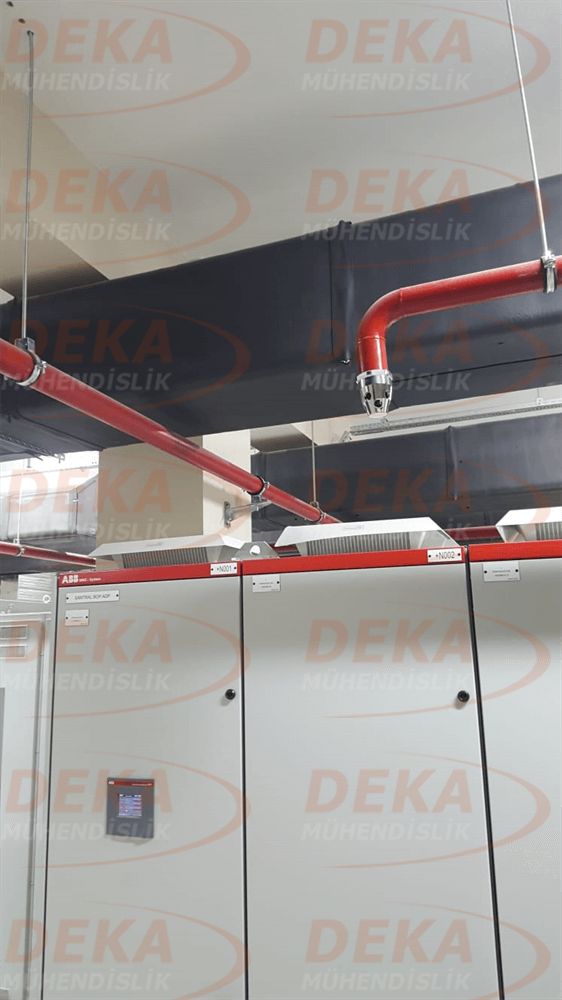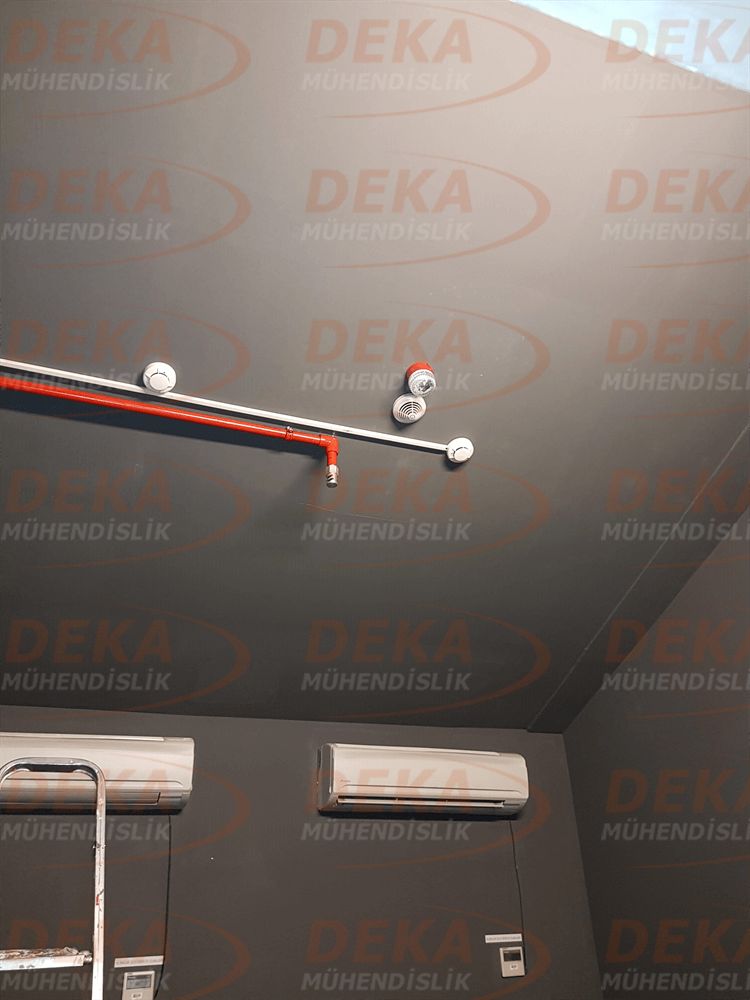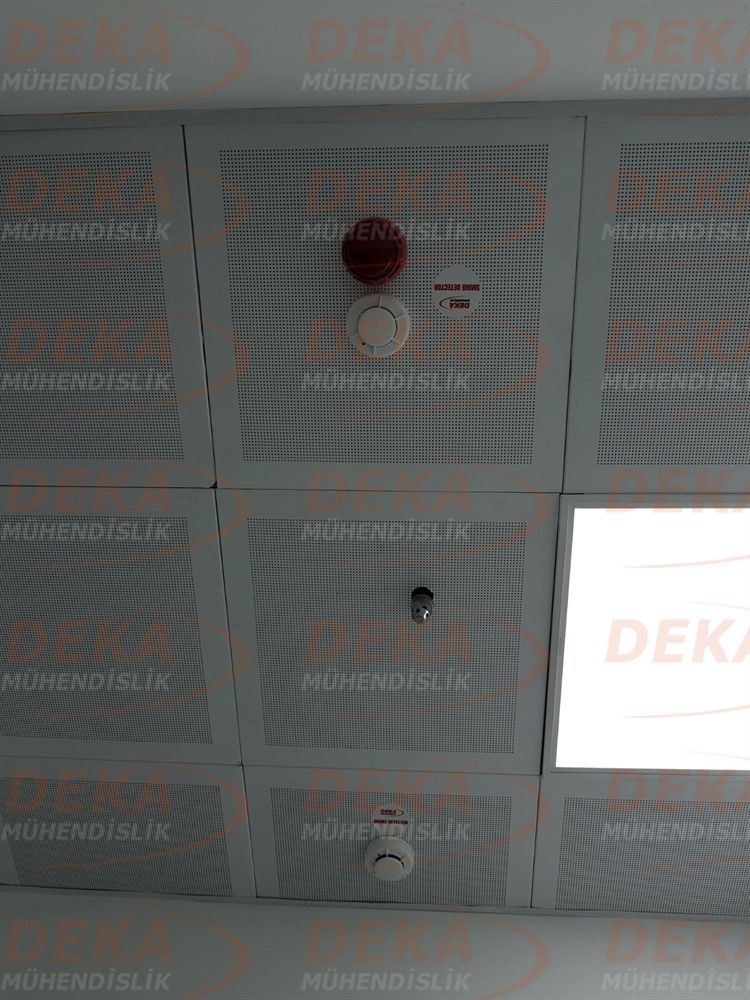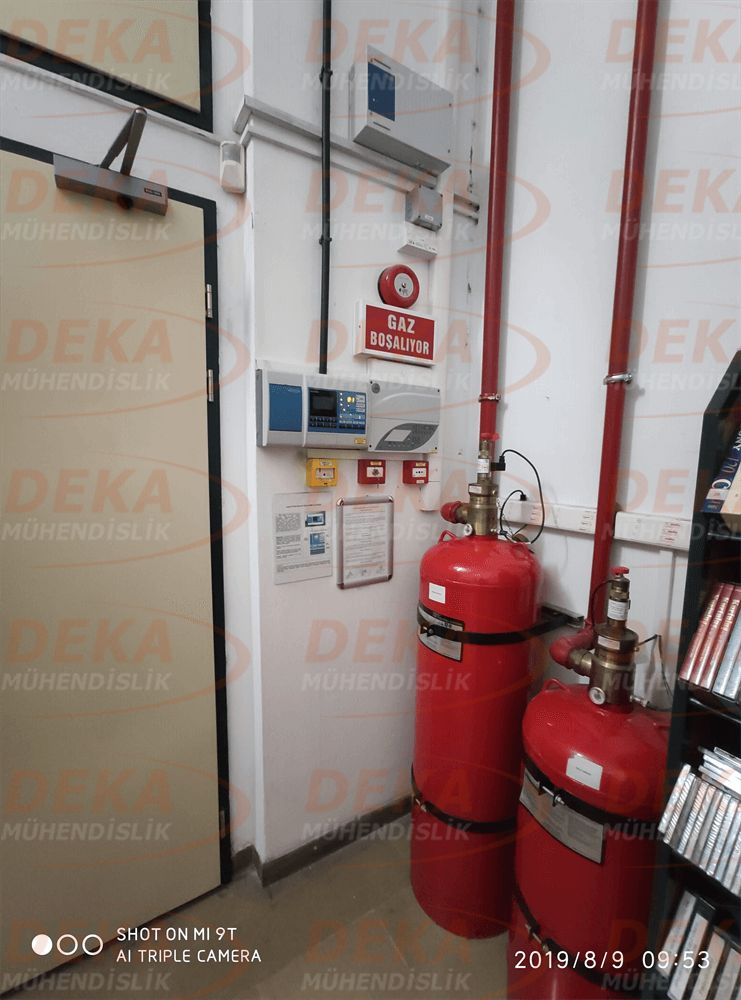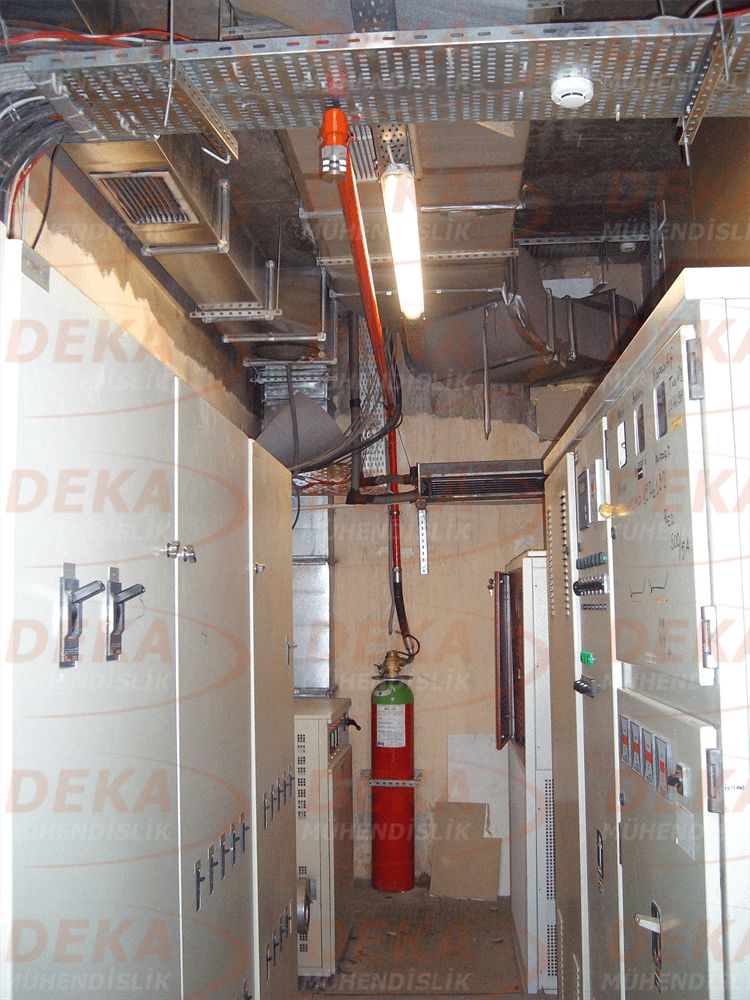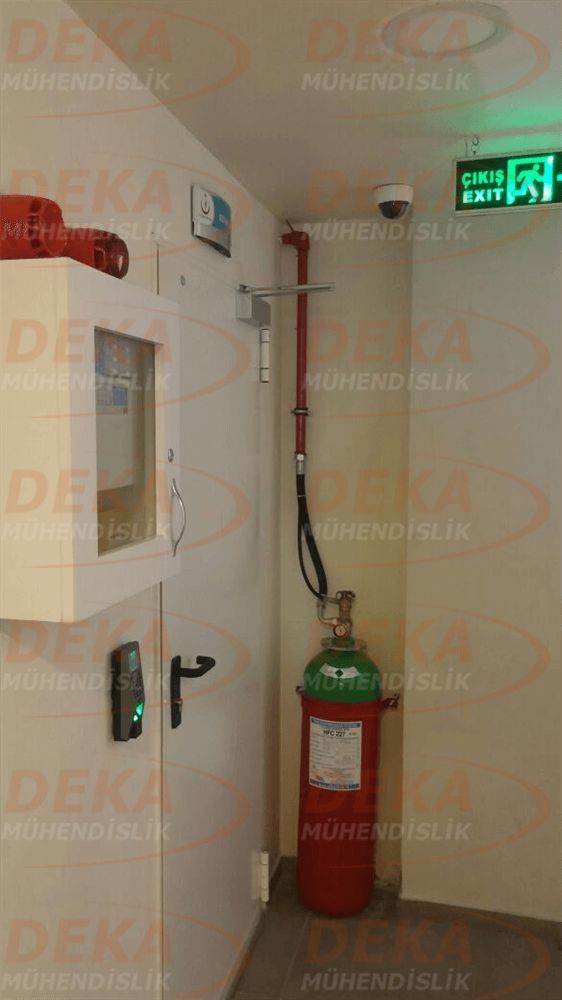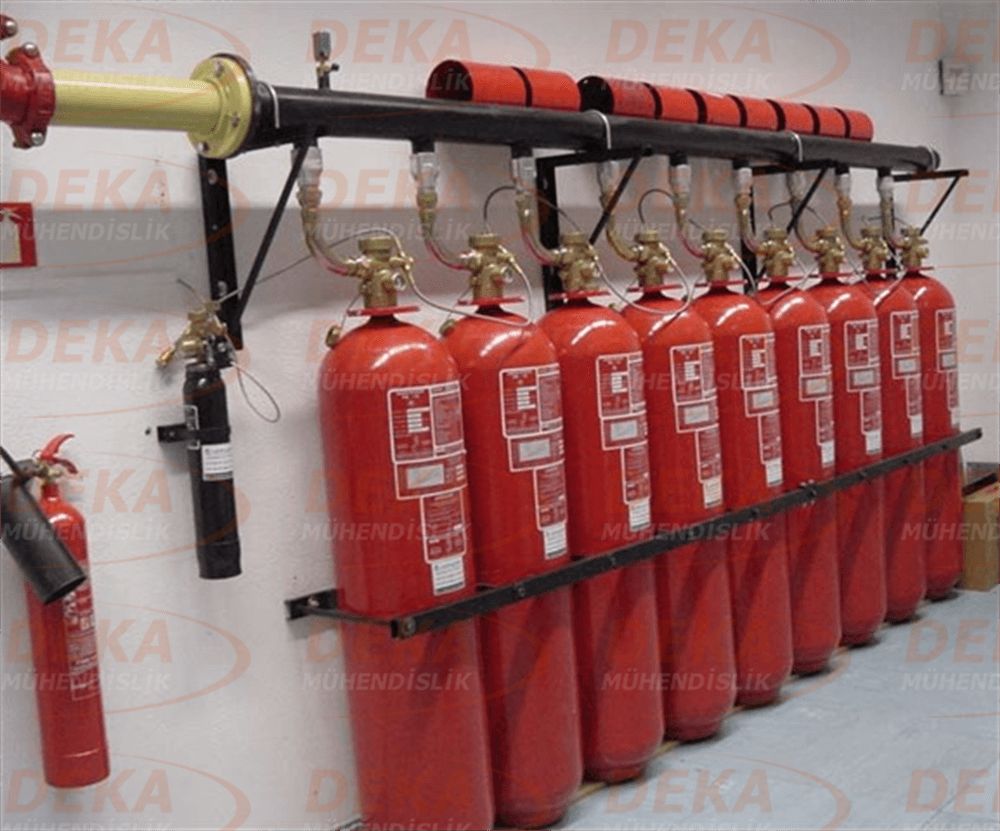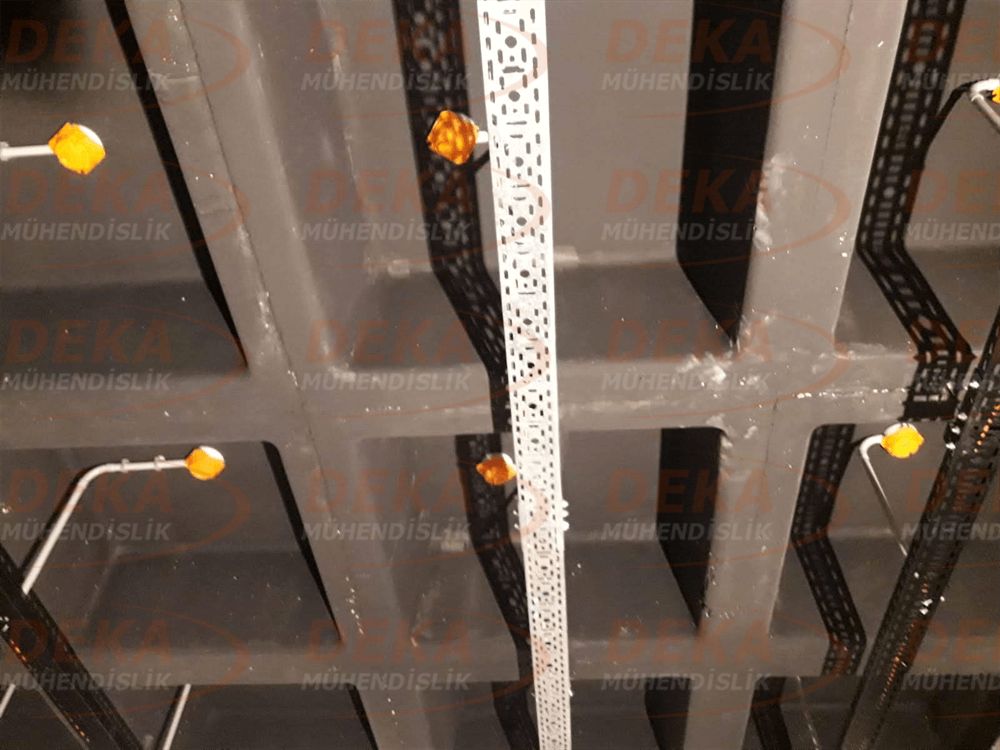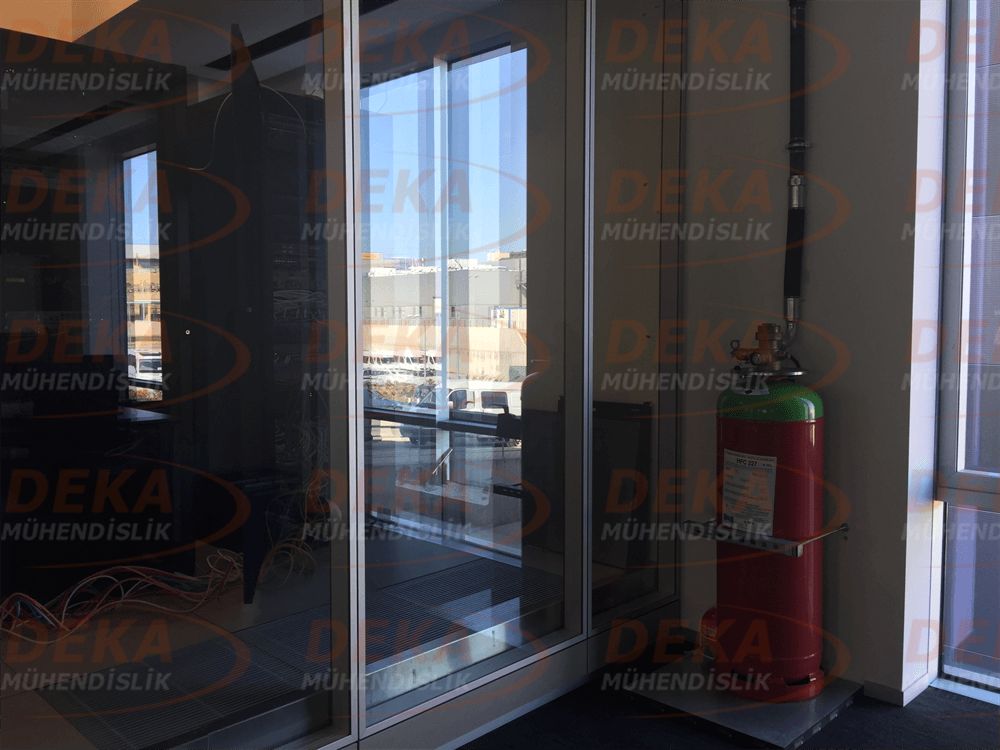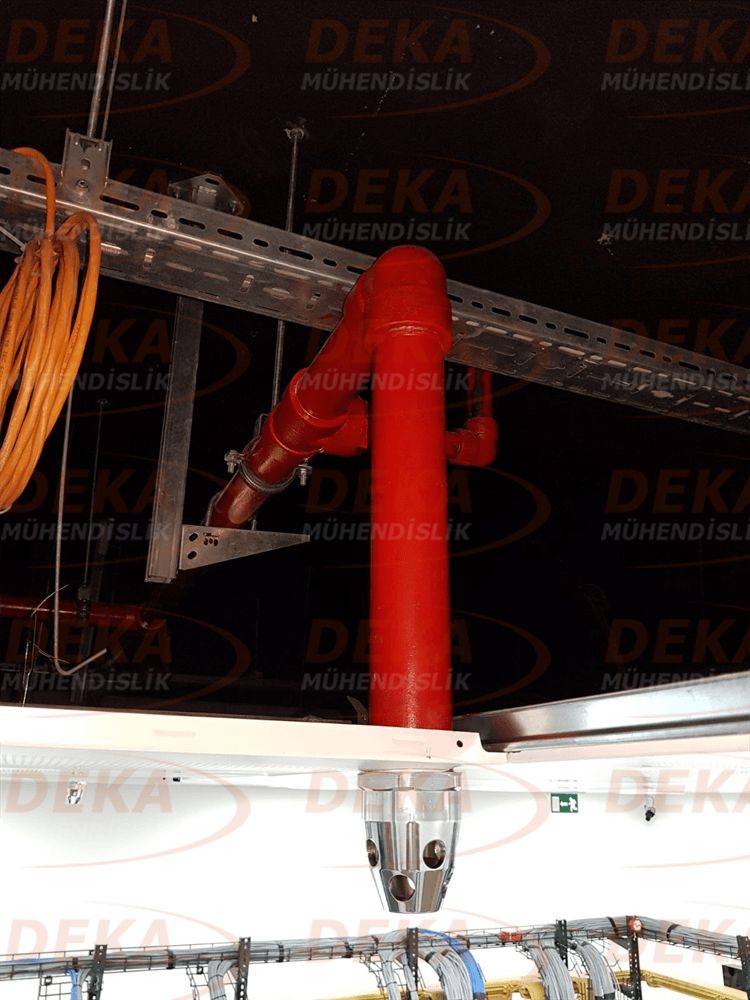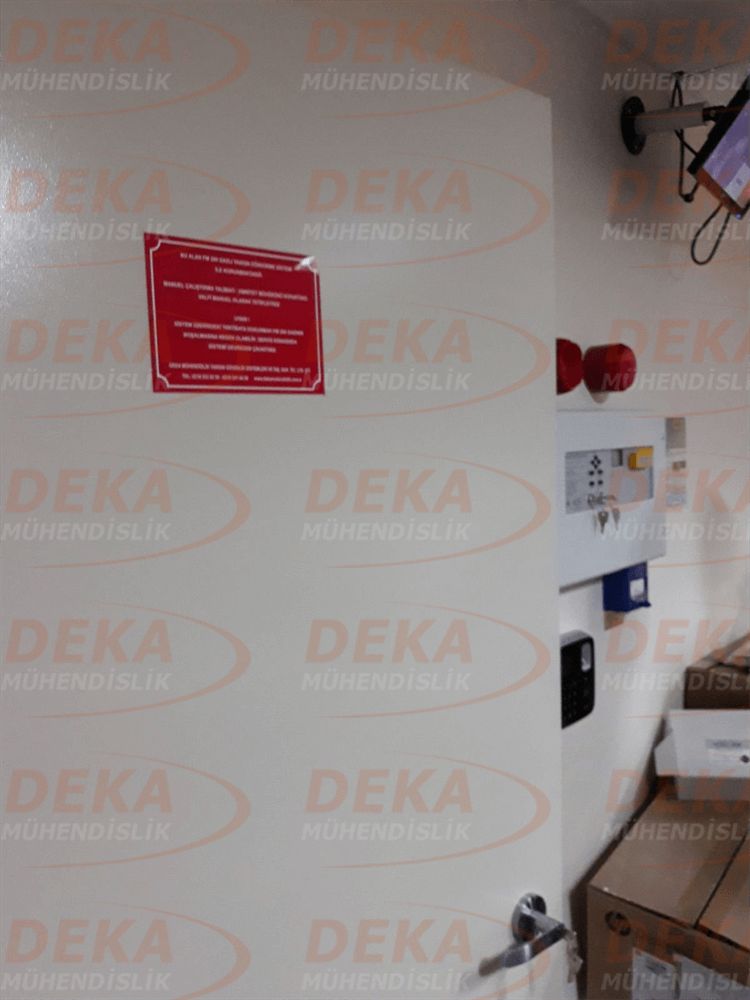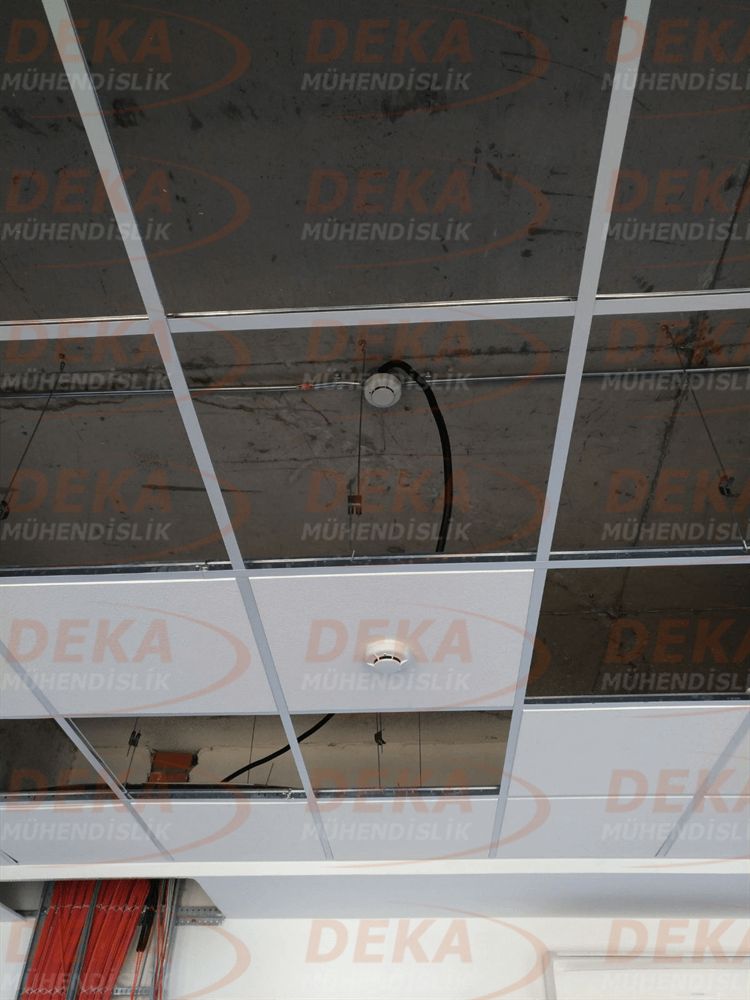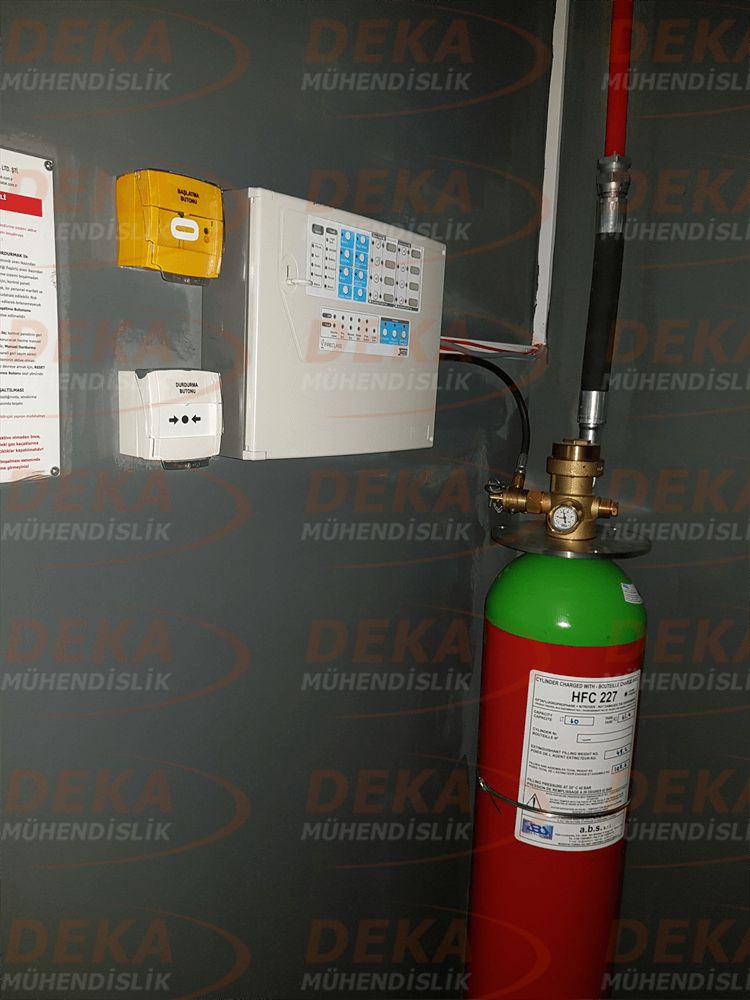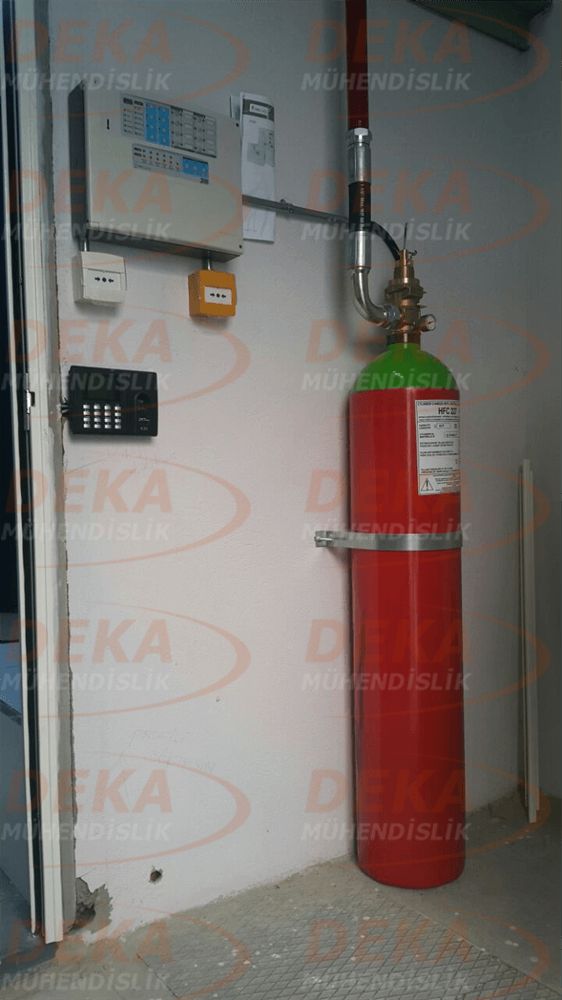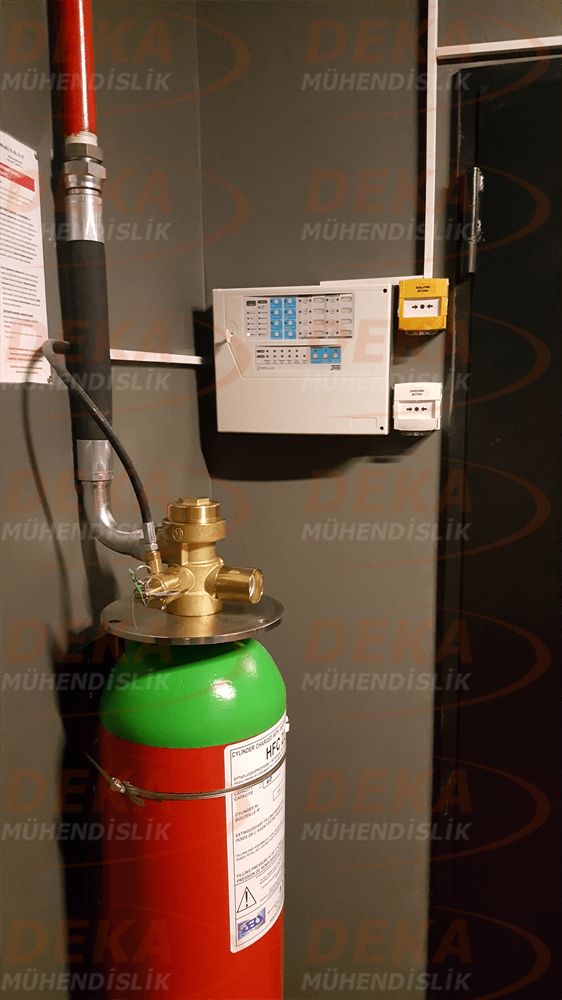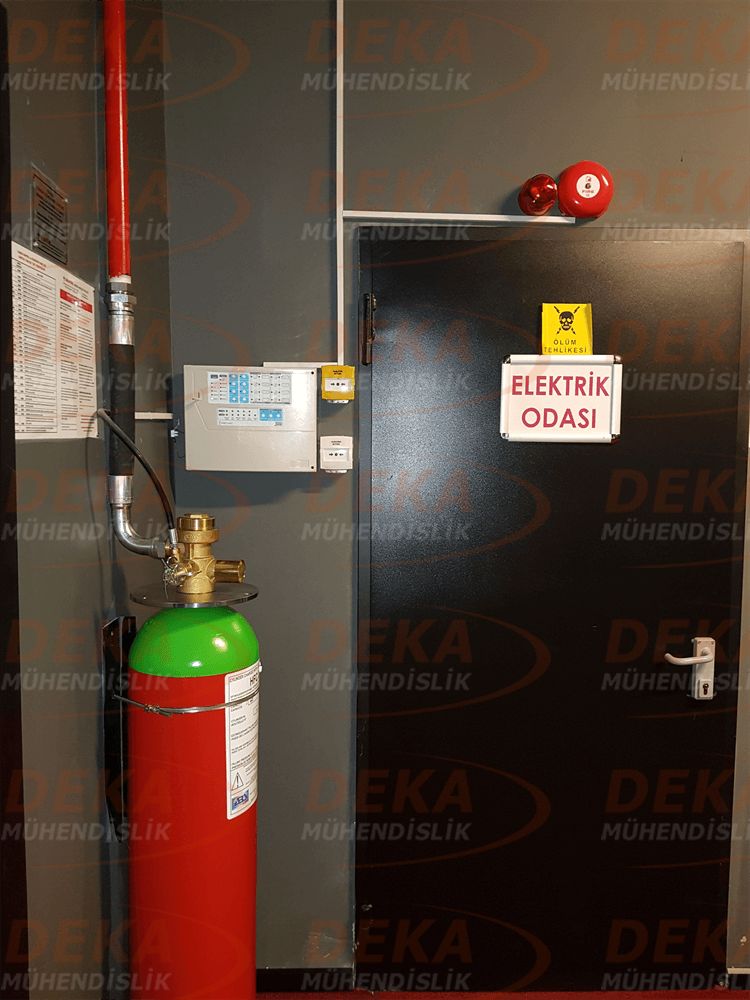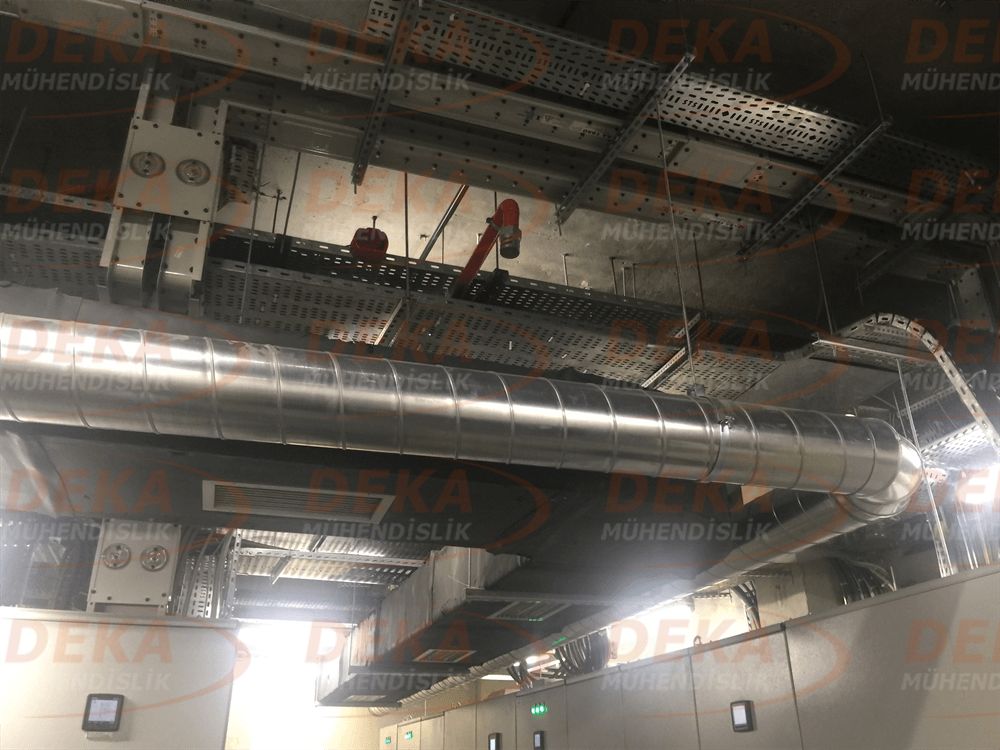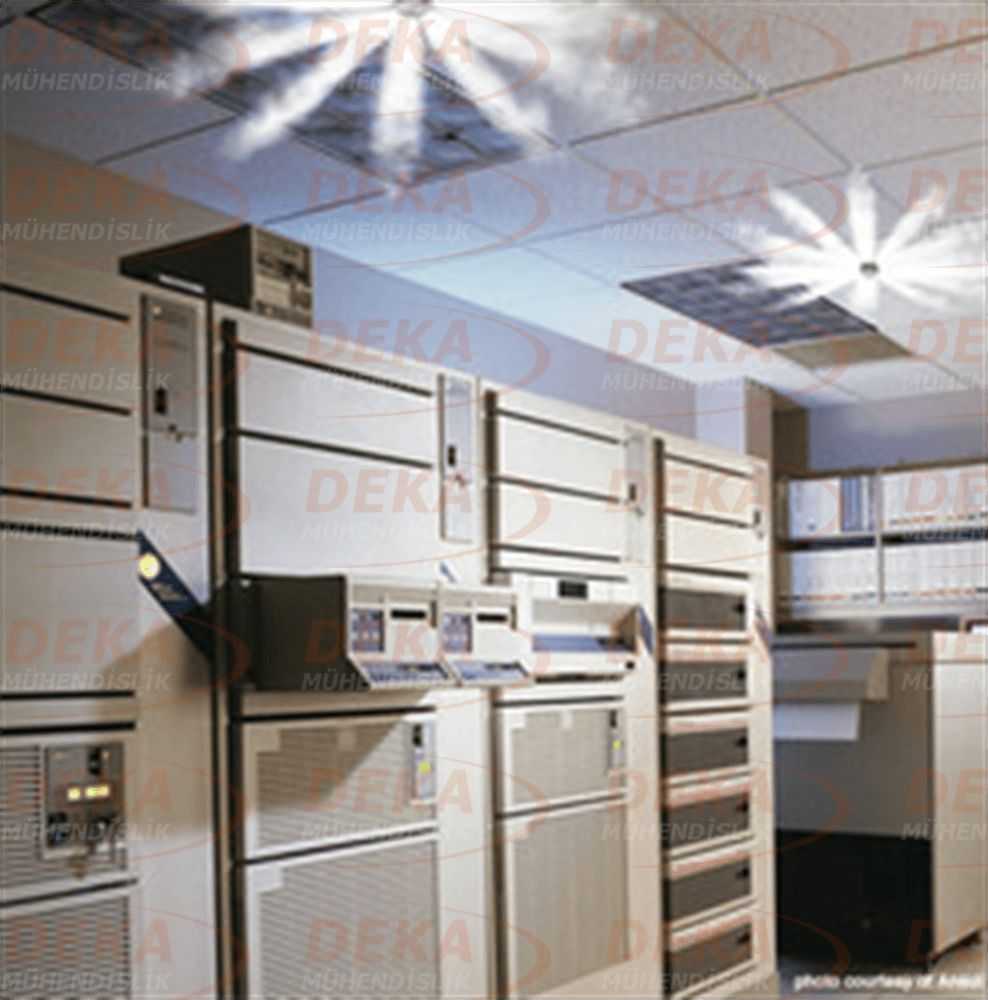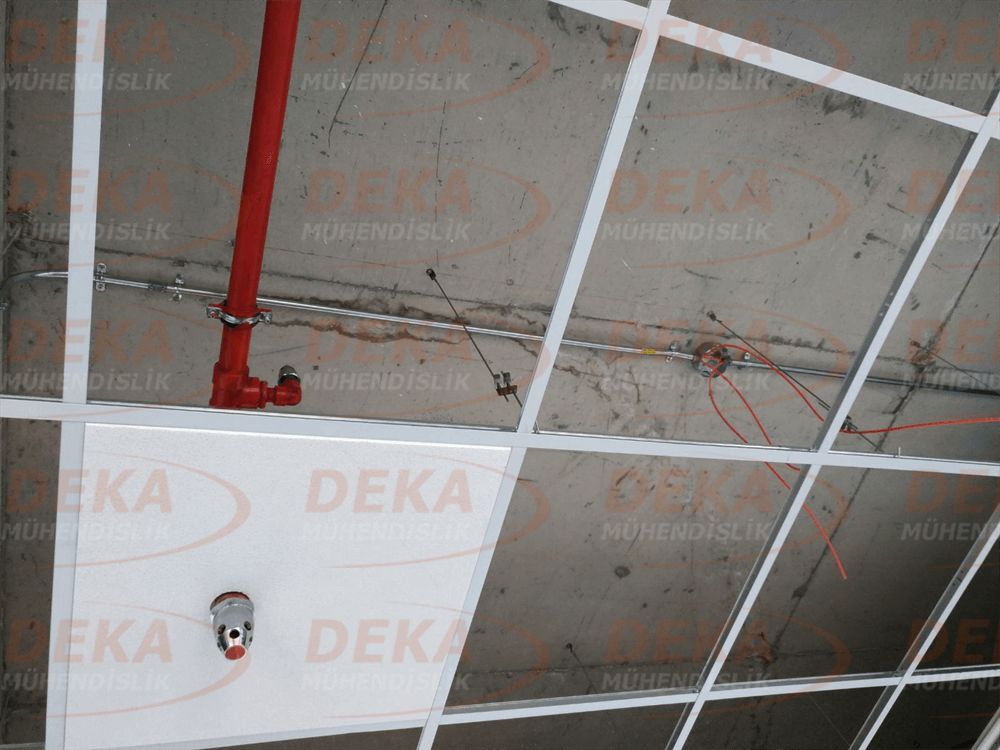








FM 200 gas fire extinguishing system is the most commonly used fire extinguishing system in person places with electrical and electronic devices. FM 200 extinguisher gas extinguishes fires with its ability to break chemical reactions and absorb heat energy. We prefer the FM200 fire extinguishing system to extinguish fires in sensitive and precious areas where water, foam and dry chemicals are not applied.
FM 200 gas, determined by its chemical formula HFC 227, is a halocarbon group extinguisher called Heptafluoropropane. FM 200 gas is colorless and odorless. Similar to Halon, it can be filled in cylinders under pressure and stored in liquid form. The most important feature of being feasible and usable is that the liquid in the liquid state is released homogenously in the volume to be protected by evaporation as a result of the release of the spray nozzles and decreases the oxygen level below the combustion level. Although the extinguishing property of Halon gas is chemical, the extinguishing property of FM 200 gas is physical. Systems using FM 200 gas have been repeatedly tested. FM 200 extinguishing system is an effective, clean, safe for human life, gas extinguishing system that does not harm the environment (ozone layer).
Halon gas is prohibited because it damages ozone as extinguisher. It is not a life-threatening extinguisher like CO2. FM 200 gas, on the other hand, is a extinguisher used when people are in the area. The disappearance time in the atmosphere is 36-37 years. It does not damage the ozone layer.
The cross-zone fire detection system verifies whether a real fire has occurred. Accidental and false alarms prevent system discharge.
In our country, the required gas amount and system capacity are determined based on the ISO 14520-9 standard. Pipe diameter nozzle number and nozzle location are applied and installed according to the data obtained as a result of hydraulic calculation. FM-200 gas discharges to the protected volume in maximum 10 seconds and suppresses the fire in a very short time.
As well as a well-designed extinguishing system, it is important to perform the application correctly and maintain it in quarter periods for year. In this way, the performance of the system is checked, the equipment is maintained and the system is working. In systems that are not maintained and tested, it is prevented that they do not work in case of fire or that system faults occur.
It is a more effective extinguisher than inert gases. Cylinders require very low pressure at 24-42 bar levels. These amounts are much higher in inert gases (200-300 bar). Thus, refilling conditions are less risky.
Usage Areas
- Computer rooms
- Underfloor with high cable density
- Museums
- Art galleries
- Libraries
- Process control rooms
- Telecommunication rooms
- Cash desk
- Archives
- Historical buildings
- Laboratories
- (A), (B), (C) and (E) class fires
- Energy fields
- Electronic systems
- Industrial plants
- Filter and silo
- Military facilities
- Armored vehicles
- Ships

